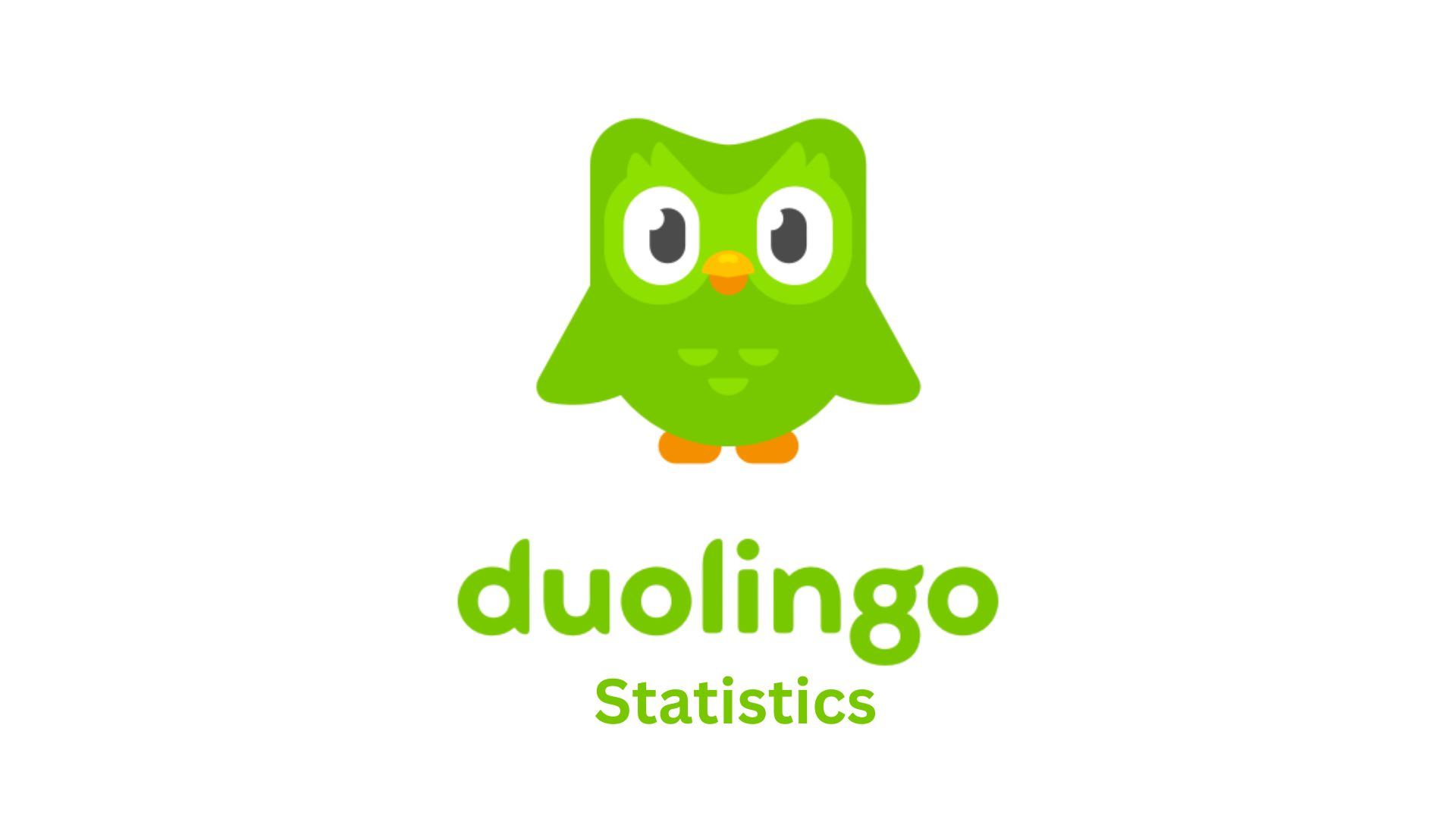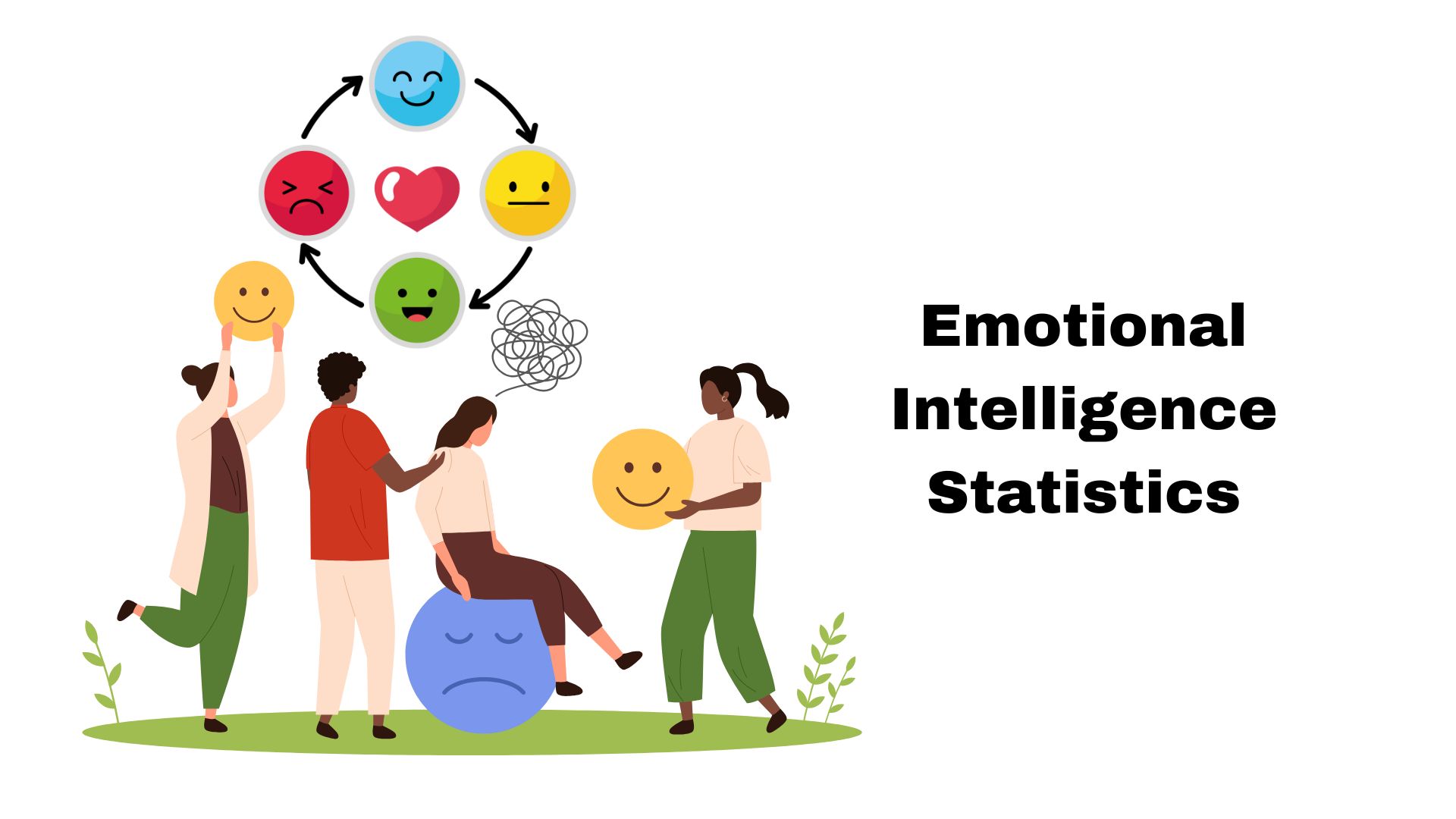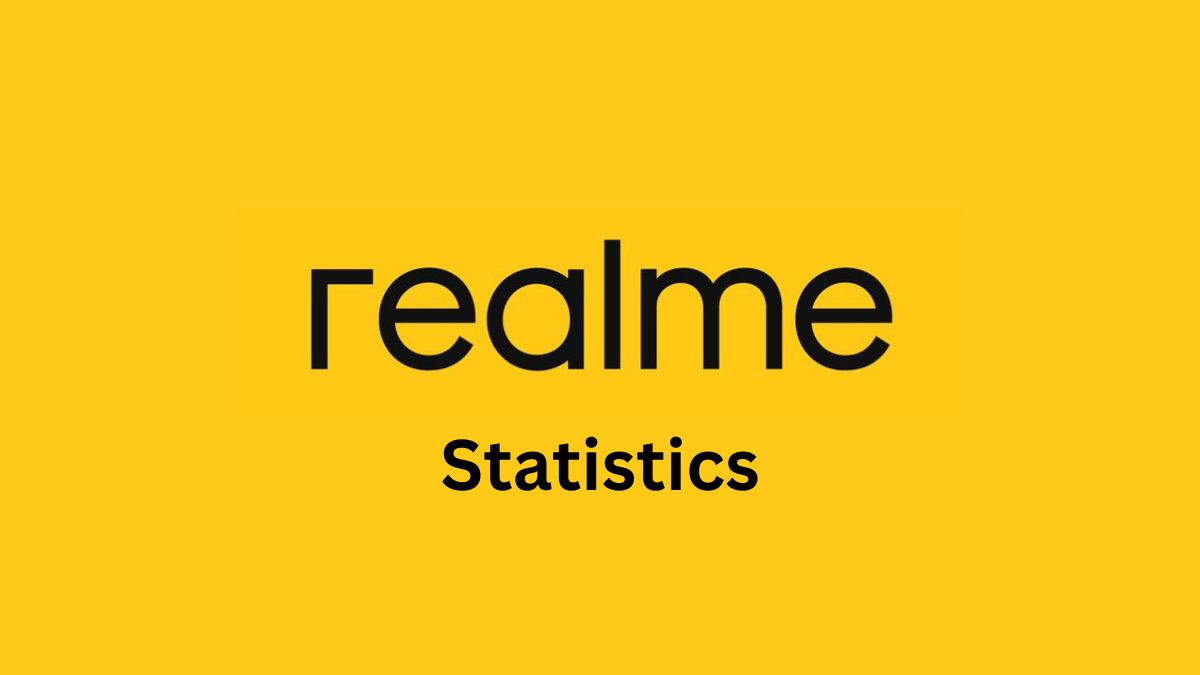Baby Boomer Statistics By Health, Travel, Demographics Trend And Facts (2025)
Updated · Jul 07, 2025
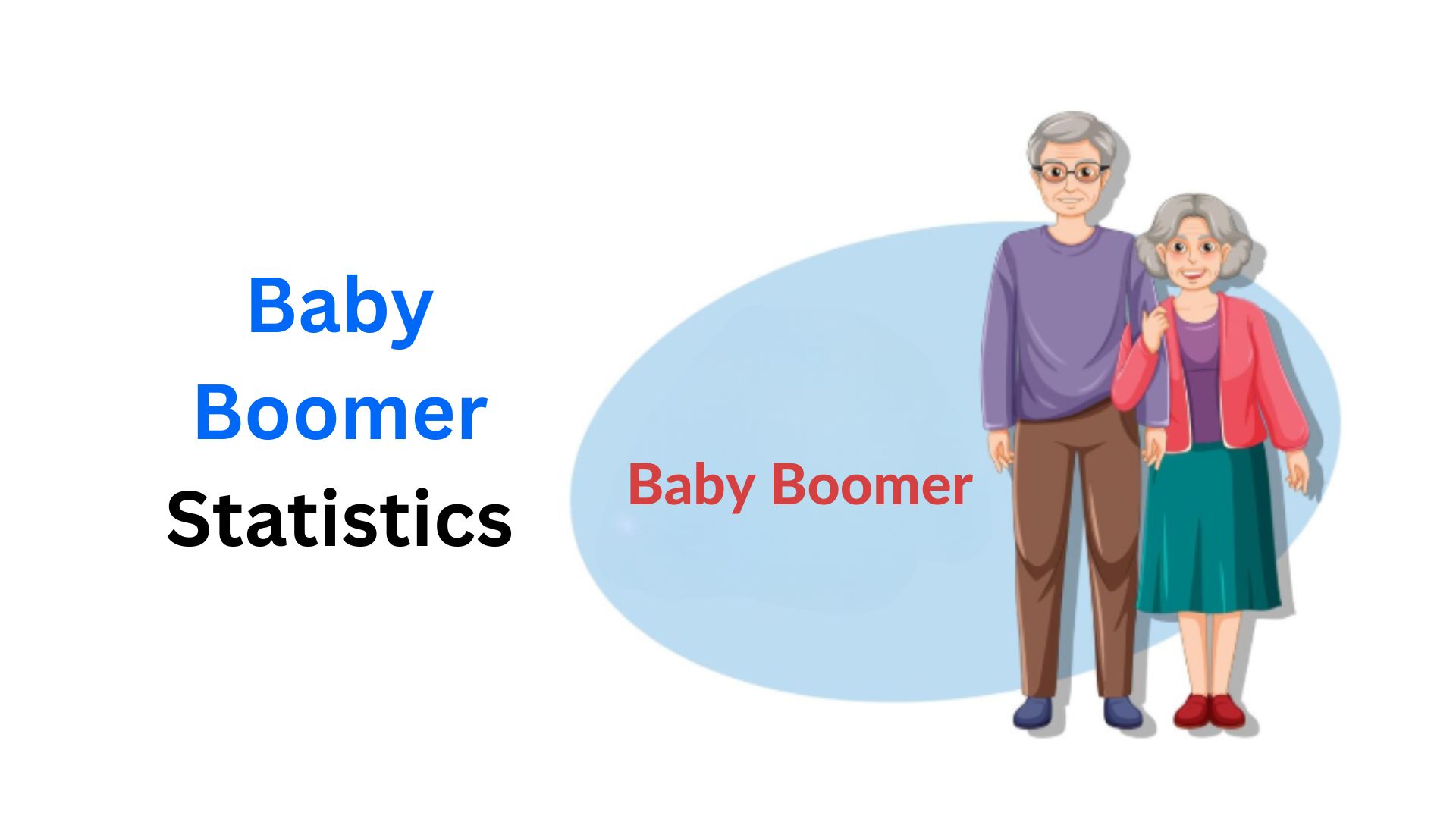
Table of Contents
- Introduction
- Editor’s Choice
- Baby Boomer Population In The UK
- Baby Boomer Favourite Beverages
- Baby Boomer Financial Accounts
- Top Relocation Destinations And Housing Trends Among Baby Boomers
- Baby Boomer Travel Statistics
- Baby Boomer Demographics Trends
- Baby Boomer Health Statistics
- Baby Boomers’ Growing Digital Media And Changing Media Habits
- Conclusion
Introduction
Baby Boomer Statistics: Baby Boomers, those born in the years between 1946 and 1964, continue to impact the economy, labor market, healthcare, and housing facets of our society. As of 2024, this generation is about midway in dealing with retirement savings, financial security, and health issues.
This article explores the newest Baby Boomers statistics and trends that affect the landscape in 2024 and offers an insight into their demographics, economic status, employment patterns, health issues, etc.
Editor’s Choice
- As of 2023, it was estimated that there were some 13.57 million individuals within the UK’s Baby Boomers generation, aged 59 to 77, with the numbers decreasing along with age.
- Dole, A&W, and Del Monte were the favourite beverage brands for Boomers in the U.S., with each earning an 82% favorability rating in Q3 2024.
- 45% of Baby Boomers check their financial accounts daily, whereas 48% work with them solely to manage money.
- 38% of Boomers pay off their full credit card balances every month, higher than other generations.
- Only 11% of Boomers don’t have a credit card, whereas 21% of Gen Z do; Boomers mostly use credit cards for online shopping.
- 18 U.S. cities that have populations with more than 25% Baby-Boomer population, such as Pembroke Pines, FL, accounting for 29.18%.
- In 2024, 74% of Boomers had placed a priority on travel, for which they spent around US$6,600 a year, which is 20 to 50% higher than what Gen X and Millennials spend.
- About 84% went to online services to book their travel; only 1% used AI for their holiday planning, whereas 30% had tried the AI tool from Booking.com.
- 99% will have planned at least one leisure trip during 2025, averaging 3.3 trips; 81% travel with a spouse.
- Boomers account for 80% of luxury travel spending, with an additional 55% of them considering the smartphone their fellow and thus must be taken along while travelling.
- Daily in 2024, at least 11,000 Baby Boomers will be retiring, posing the threat of ‘brain-drain’ in industries such as construction and agriculture.
- Demand is on the rise for senior housing and medical office space while supply remains limited.
- Eight in ten U.S. adults 65+ years suffer from at least one chronic condition; 77% have at least two.
- Close to 75% will require long-term care; 40% will require skilled nursing care.
- More than 40% of Boomers have no retirement savings, which will impact their ability to afford healthcare.
- In 2024, the media time spent online by those over 55 globally crossed 54.4%, which was 47% in 2020.
Baby Boomer Population In The UK
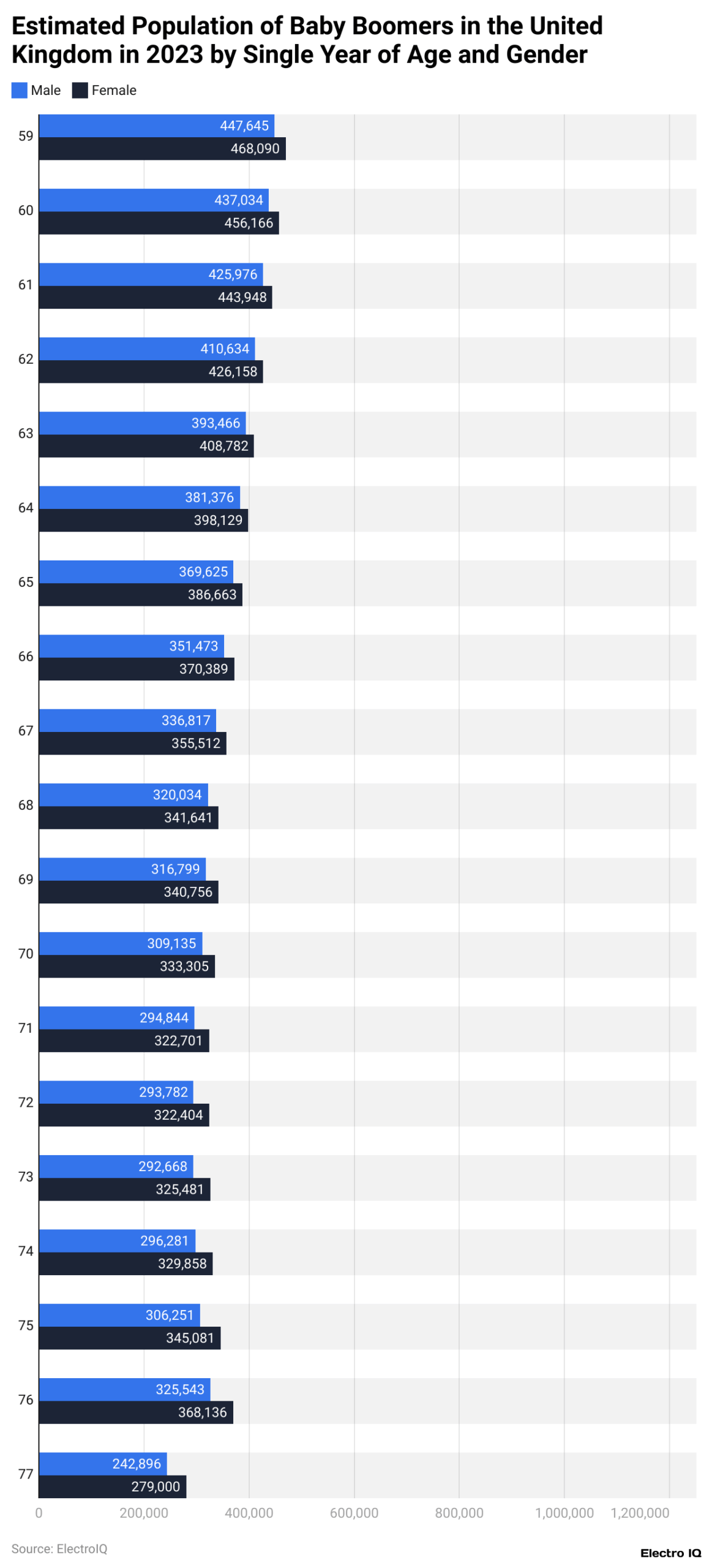
(Reference: statista.com)
- As per a Statista report, Baby Boomers statistics show that in 2023, the United Kingdom had an estimated 13.57 million people belonging to the Baby Boomer generation, who were aged between 59 and 77.
- Somewhat conversely, those aged 59 were in the greatest number, with 915,735 individuals, while those aged 77 were the least, numbering 521,896. Indeed, the population within this age range progressively decreases as they advance in age.
Baby Boomer Favourite Beverages
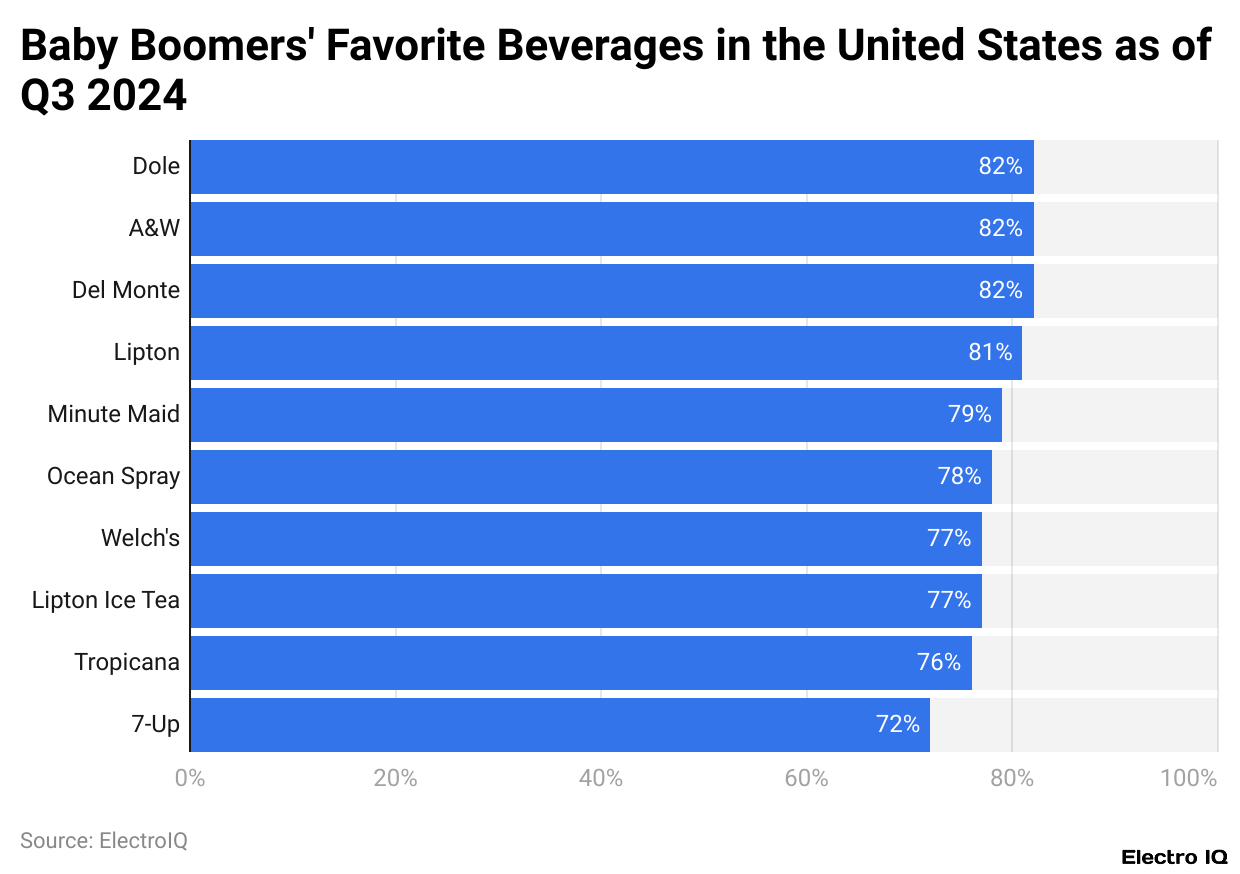
(Reference: statista.com)
- According to a Statista report, Baby Boomers statistics state that during the third quarter of 2024, Baby Boomers favoured Dole, A&W, and Del Monte beverage brands in the United States.
- The three brands equally enjoyed the preference of 82% of the endorsers within this age group in the survey.
Baby Boomer Financial Accounts
- As much as 45% of Baby Boomers check their accounts daily, which is at least a sign of strong habits of staying on top of their money.
- Asked how they manage their money, 48% said they use their financial accounts alone to track finances, a marginally higher percentage than younger generations.
- The remaining 23%, by the way, still resort to spreadsheets or manual means to track.
- Baby Boomers pay off their credit card full balance every month 38% of the time, the most of any generation. They are also more inclined not to have a credit card: 11%, compared to 21% of Gen Z who say it does not own one.
- Along with being the only generation to list credit cards as their favourite way to pay for things online, Baby Boomers truly stand apart.
Top Relocation Destinations And Housing Trends Among Baby Boomers
- Offering Baby Boomers an attractive option for relocation are warmer and affordable places in Florida and the Phoenix suburbs.
- Palm Coast led with the highest influx of Baby Boomers at 3.69% of the total local population considered as new Boomer residents.
- Other major cities in Florida include Cape Coral at 3.12%, Pompano Beach at 3.07%, Clearwater at 3.00%, Fort Lauderdale and Gainesville at 2.75% each, and Palm Bay at 2.70%.
- In Arizona, the suburbs of Phoenix were also among the favourites, with Scottsdale rated at 3.11%, Surprise at 3.10%, and Goodyear well out ahead at 23.09%.
- Sunnyvale in California, located in the San Jose metro area, also stood out as a noteworthy destination for Baby Boomers relocating from abroad.
- Ranked 36th overall, Sunnyvale welcomed Baby Boomer migration of 2.12% during the year, with more than half of the migrants, 1,613 out of 3,168, coming from overseas.
- Apart from relocation rates, there are 18 U.S. cities whose populations are more than 25% Baby Boomers.
- They include Pembroke Pines, FL (29.18%), Thousand Oaks, CA (28.67%), Port St. Lucie, FL (26.76%), and Oceanside, CA (26.23%).
- Other cities with large Boomer populations will be St. Petersburg, Hialeah, Garden Grove, Springfield (IL), Huntington Beach, Spring Hill, and Vallejo. Moreover, many of these locales are in turn relatively low in housing costs.
- In Las Cruces, New Mexico, the lowest median monthly cost for housing can be found among the 20 top Boomer destinations, at US$960.
- It comes next with Lakeland, Florida, at US$1,205 per month. For high-boomer populations, Topeka, Kansas, has affordable housing costing an average of US$924 monthly, while in Springfield, Illinois, houses are renting for a little more at US$940 monthly, both offering attractiveness and affordability for the retirees.
Baby Boomer Travel Statistics
- In 2024, Baby Boomers still considered travel as a high-priority interest, with 74% placing it at the very peak of their list.
- Most preferred to stay within their own country, with 64% choosing domestic trips and 36% choosing to travel abroad.
- Despite advances in technology, only 1% of Boomers used AI tools to assist with holiday choices; however, 30% did state using Booking.com’s AI trip planner algorithm.
- In a completely ironic way, 30% of Boomers still revert to cooing over quaint travel brochures for inspiration.
- On average, each Boomer spends approximately US$6,600 yearly on travel, an amount that is about 20%-50% more than a Gen-X’er or Millennial spends on the same account.
- Coming into 2025, it is anticipated that Boomers will take about 3.3 trips per annum, that 99% of Boomers will take at least one leisure trip, and that 81% of them will be travelling with their spouse or significant other.
- Travel plans are also subject to the effect of global events, with 71% of Boomers stating that the ongoing Russia-Ukraine war could influence their choices regarding international travel.
- Yet 84% plan to use the internet to book their travels.
- About 62% said they would take most, if not all, of their annual leave, compared to 77% of Millennials.
- They spend more on luxury travel, too, with Baby Boomers accounting for 80% of all spending in the category.
- Technology plays its part, with smartphones ranking as must-haves during travel for 55%.
- In addition, 38% of Boomers say that they have a personal itinerary bucket list, which demonstrates that the spirit of exploration still exists, as does the thirst for creating gratifying memories.
Baby Boomer Demographics Trends
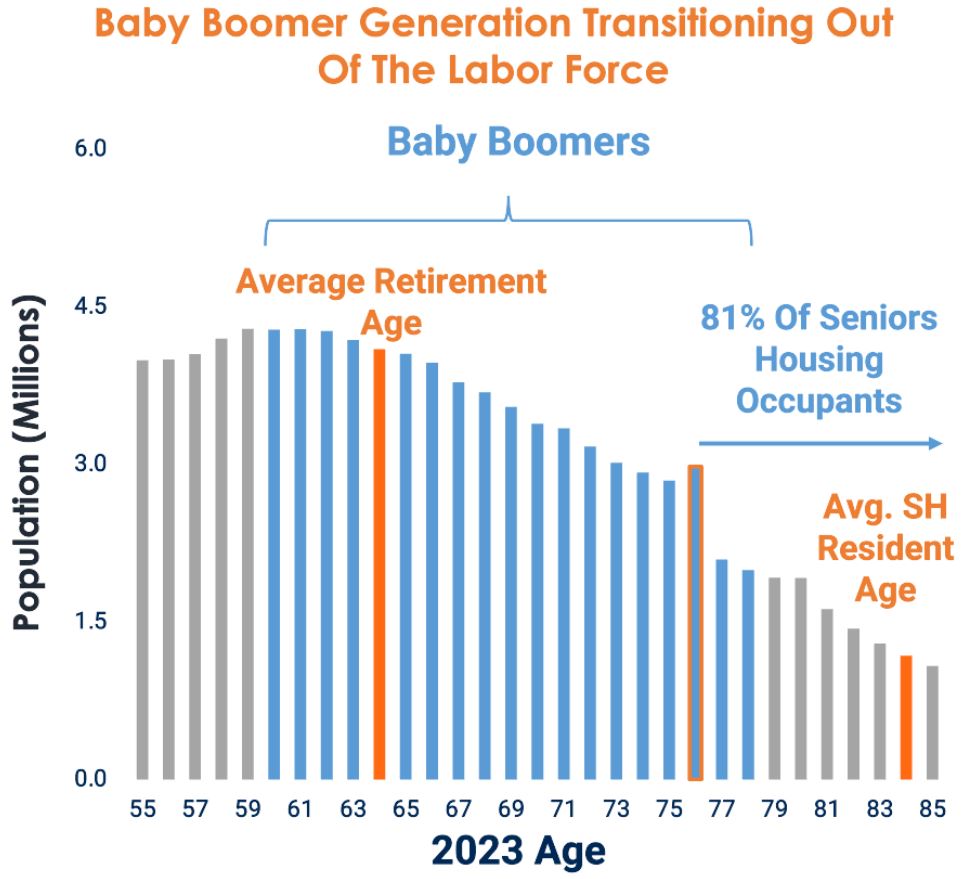
(Source: limonnetleasegroup.com)
- According to projections, Baby Boomers statistics indicate that around 11,000 Boomers will retire daily in 2024, heralding a colossal age shift as this big generation exits the workforce. This mass retirement could cause a serious “brain drain” as many of the exiting workers are among the skilled and experienced in their fields.
- Construction, agriculture, and manufacturing industries are especially at risk, as these industries have a large number of older workers in their labor force.
- These sectors may struggle to maintain productivity and bridge the remaining talent gap. At the same time, the aging Baby Boomer population is likely to drive demand for commercial real estate in certain areas.
- Medical office surrounds and senior housing, for example, will find increased demand as Boomers enter their late 60s and 70s.
- With this demographic transition, the number of doctor visits and the need for assisted living facilities will increase.
- However, both sectors have experienced very little new development of late, so older properties might become more valuable and sought after as the population matures.
Baby Boomer Health Statistics
- According to Alterahealth, Baby Boomer statistics state that ageing boomers led to the 65-and-over U.S. population growing at the fastest rate seen in the last hundred years. Good health may deteriorate with age, with new figures showing that 80% of adults over 65 have at least one chronic condition.
- Roughly 77% have two or more, while 75% of this group will require some long-term care in their lifetime.
- In contrast, 40% will even need skilled care within a nursing facility.
- This burgeoning demand for healthcare and long-term care services puts a strain on the broader health system to adapt, especially when considering the size of the Boomer population.
- Further, the care needs become more complex as more older adults live with multiple chronic conditions. This challenge is exacerbated by the fact that many Boomers have little in the name of an economic buffer—above 40% of them do not have any form of retirement savings, thus also limiting how much they can pay for care and associated services.
- Healthcare providers must build stronger links with community-based organisations in the care sphere as these connections can assist in addressing social determinants of health that preclude older adults from accessing transportation, food, housing, or support services to meet their needs outside of the clinical settings.
Baby Boomers’ Growing Digital Media And Changing Media Habits
- While much of the marketing has been focused on younger generations like Gen Z, the Baby Boomers, who are the older audience, are increasingly adopting digital content.
- By 2024, people over 55 are projected to spend 54.4% of their media time consuming online content, up from 47% in 2020, according to GWI. It includes digital forms of traditional media such as connected TV, digital audio, and online newspapers.
- According to WARC, Baby Boomers statistics show that the last decade has seen a major shift in media behaviour. Back in 2013, adults aged 45 to 54 were only dedicating about 31.6% of their media time to digital channels.
- Fast forward to 2023, and the 55-64 age group—those born between 1959 and 1970—are now spending 53%. Much of this growth is accounted for by digital habits born out of the pandemic period.
- Social media is still considered part of Boomers’ media diet, though it makes up less of their time than it does for younger generations. It is expected that cheers will be raised among the huge factions of those considered old Gen Xers and younger Boomers, aged 55-64, with the US estimating an average of 93 minutes of time being spent on social media daily in 2024—a whopping 43% increase from 2015 when it was just 65 minutes.
- But other types of digital content are newer and grow faster. Online TV uptake by Boomers is up 195% since 2015 as they seek new streaming sources like Netflix and YouTube.
- Older adults still chiefly use Facebook, with Boomers constituting 29% of all weekly users in the U.S.; in contrast, only 9% were on TikTok weekly. In the UK, a slight decline has been recorded in the incidence of social-media use amongst those aged 55 and up: from 58.3 minutes in 2015 to 52.2 minutes in 2023.
- In China, high mobile penetration notwithstanding, the recent trends have been unfavourable for Social Boomers and their social media engagement. Baby Boomers are the least responsive generation when it comes to advertising.
- Only 12% say they feel positively toward ads, in contrast to the global average of 47%. Just 4.5% of Boomers have had respite from the increasing ads by opting for cheaper, ad-supported means of streaming by Netflix and Disney+, while 28.4% of Gen Z are opting for these.
- However, increasing ad loads being placed on TV are driving some Boomers away; yet there lie positive responses on platforms like TikTok. Older generations are believed to be more attentive toward advertising; however, attention spans are more affected by the way a platform is designed than by age.
- According to research led by Prof. Karen Nelson-Field, people aged 55 and above show only 1.5 extra seconds of active attention across media compared with all other age groups.
Conclusion
With all that said, the generation stands at a very crucial intersection in 2024, amidst ageing opportunities and challenges. Being an immense economic reservoir, the Baby Boomers are still contributing to production, considering themselves. A few of these challenges include being underprepared for retirement, health conditions, and a lifestyle to adapt to. It is imperative that these dynamics are attended to by policy-makers, business owners, and society at large.
FAQ.
In 2023, there were an estimated 13.57 million Baby Boomers in the UK between the ages of 59 and 77. Moving within this age range, the largest subgroup within is age 59, with intervening numbers of 915,000-plus persons, and downward from there with age going to about 522,000 by age 77.
Baby Boomers are disciplined. About 45% will check their accounts daily, and 48% will use the account as their only form of money management. They tend to be the first generation to pay credit card bills in full each month (38%), and only 11% report not having a credit card, while 21% of Gen Z say they do not own one.
Baby Boomers are following the trend toward warm and affordable relocation opportunities, choosing places such as Palm Coast and Cape Coral in Florida or the Phoenix suburbs in Arizona. Cities such as Goodyear, AZ, and Sunnyvale, CA, have seen considerable Boomer migration, with lifestyle and affordability frequently providing the pull factors.
In 2024, about 11,000 Boomers leave the workforce every day, and this threatens the skilled manpower supply. At the same time, 80% of Boomers have at least one chronic disease, a staggering 75% are likely to require long-term care, and 40% will actually require skilled nursing care. This increased demand has placed pressure on healthcare and senior living infrastructure.
Travel remains a priority, with 74% of Boomers planning leisure trips, spending about US$6,600 per year on average, a rate 20-50% above that of younger generations. As for media habits, in now 54.4% of Boomers’ time is spent online, streaming and looking for digital content increasingly, though they still prefer Facebook to TikTok.

Joseph D'Souza founded ElectroIQ in 2010 as a personal project to share his insights and experiences with tech gadgets. Over time, it has grown into a well-regarded tech blog, known for its in-depth technology trends, smartphone reviews and app-related statistics.





